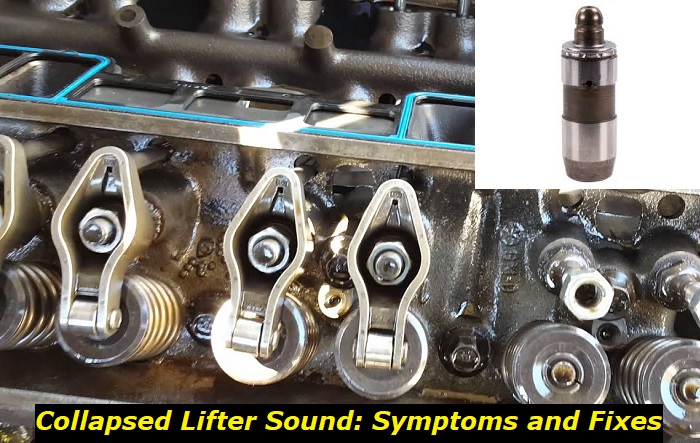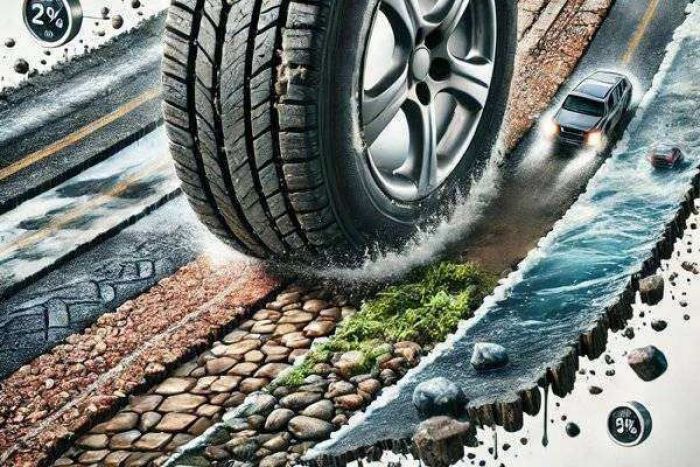If you are a doctor or an accountant, it is likely you have never heard of the word lifter used on a car. Well, you are not alone. Lifters are nifty small things found in the engine whose presence and importance are only felt when they malfunction. These metallic engine parts work hand in hand with rocker arms and valves to ensure the smooth operation of the piston and the piston rod.
Lifter problems highlights
- Level of importance:Medium
- Commonreasons:Age, poor oil, too high oil viscosity, mileage
- DIY inspection:Almost impossible
- DIY repair:Possible but very complicated
- Price for repair:$450 - $1,200
- Can you drive?Usually, yes
- Ways to fix:In most cases, replacing the lifters will be the only proper choice

What is a lifter and the collapsed lifter sound?
A lifter is a small cylindrical metallic part that is located next to a valve. A rocker arm is used to connect the lifter and the valve. A lifter plays a crucial role in the opening and closing of the valve.
When we say car lifters, we mean hydraulic lifters, which are predominantly found on all mass-produced vehicles. There are mechanical lifters, but that is a topic for another day. The smooth operation of the lifter, the rocker arm rod, and the valve are all smooth until something makes the lifter malfunction.
When a lifter goes bad in the engine, you will hear a tapping or ticking noise coming from the hood area. The tapping noise is constant, and as a newbie in vehicle mechanics, you may be lost in trying to understand what is happening. It is, however, worth noting that the lifter tapping sound is mostly heard in older cars. This can further be pinpointed to older vehicles that are not regularly maintained or serviced.
While you may ignore the ticking sound coming from a collapsed lifter for a few days, it is hardly possible to ignore it for long. Ignoring the noise might not be a prudent decision, given that lifters are part and parcel of how smoothly and efficiently the engine works.
A collapsed lifter or lifters will make a continuous tapping noise. Knowing how to identify this tapping sound will help you in a big way when it comes to diagnosing the problem. Many people spend a lot of dollars trying to locate a collapsed lifter.
How does a lifter work, and what causes it to collapse?
A hydraulic lifter uses oil pressure to minimize valve clearance. To allow oil to pressurize inside the lifter and make the valve clearance possible, a minute hole is found on its side. The hole allows the lifter to be filled up with oil, which then puts pressure on the valve train. The engine pressure is responsible for filling up the lifter with the oil.
Inside the lifter, there is a spring and a plunger. The plunger and the spring in the lifter work together inside the lifter to give clearance within the valve train. The presence of oil in the lifter ensures its smooth and quieter operation. There is also a hydraulic filter that helps reduce the wear and tear of the lifter.
A collapsed lifter means that a lifter is unable to move or oil can't be pumped into it, hence making the lifter-rocker arms-check valve procedure incomplete or problematic. A collapsed lifter, at times called 'a sticky lifter', will fail to maintain pressure, and this causes the inner components to smash, grate, and even scrap each other.
Locating a collapsed lifter
A collapsed lifter will normally make a lot of noise when you start the engine. The noise is usually caused by when the oil has drained out of the lifter, and the internal spring starts slapping the bottom of the lifter.
- A layperson might expect that a collapsed lifter would not push the valve, but it does. The lifter will push the valve, but the pressure of the spring makes the lifter push way too far. This causes the clearance, allowing the spring to unload. This will then cause the loud tapping as the rocker loses and regains contact with the valve.
- When it comes to locating a collapsed lifter, the simplest way to find out involves removing the valve covers. You should then take a hammer handle and press down the rocker arm on the pushrod end. If the noise stops when you push the pushrod, then the lifter is collapsed.
- For some vehicles like the Mercedes, you will remove the valve covers and then use a vacuum hose to listen for the noisy lifter. Place the hose near each valve to pinpoint which lifter is making the noise. You can also use a mechanic's stethoscope. Once you have established which lifter is the issue, use your hand to push down the rocker and see if it goes down. A rocker that is pushed down means there is a lifter collapse problem.
- Another way to locate a collapsed lifter is to do a baseline lifter adjustment. This procedure requires the adjustment of the rocker together with the lifter on the base lobe. You should then adjust for zero lash plus a ¾ turn. To know where zero lash is, spin the pushrod, and when it gets drag on it, then that's the point. You should then turn the pushrod ¾ tighter to fully adjust the lifter. If, after making the adjustment, the lifter is still making noise, then you are likely dealing with a collapsed lifter.
Common causes of collapsed lifters
- Issues with spacing with the lifter
- High mileage
- Using dirty engine oil which leads to poor lubrication
- Not regularly servicing the vehicle
- Using the wrong type of engine oil
- Bad or clogged oil filter
- The check valve can become sticky
- Grime and debris in the lifter
How to solve a collapsed lifter problem
A collapsed lifter problem can be solved using a number of ways depending on the root cause of the issue. In some cases, you will only spend a couple of bucks, while in others, you will need to spend an upward of $1,000.
1. Replacing the engine oil
As noted earlier, lifters can collapse if the engine oil used is dirty or old, which makes it a poor lubricant for the moving parts of the lifter. For many car owners, a collapsed lifter problem was resolved by simply draining the old dirty oil, flushing the engine, and adding new oil.
The tapping sound will not go away immediately, but after driving for some miles, it should go away. Some drivers have reported that the tapping can last a whole service cycle, but it eventually goes away.
2. Using the correct engine oil
It is imperative that you take note of the engine oil the car manufacturer has recommended in the user manual. This is because the correct oil rating matches the engine parts and the intensity of lubrication required. Using any other oil type can lead to unlubricated lifters, hence the noise.
3. Add additives to the engine
Many drivers who have had this problem have come forward, saying that an additive resolved the collapsed lifter issue. For others, transmission fluid did the trick. The transmission fluid or additive removes grime from the system, and this clears pathways for the engine oil to travel in and around the lifters. The engine additives do come with instructions, but for those using the transmission fluid, 1 liter is recommended at the time of the oil change.
4. Replace the lifter
When a collapsed lifter becomes stubborn and refuses to 'heal' even after an engine flush, it is time to consider replacing it. The problem could be a broken inner spring or the lifter itself is damaged. The cost of replacing a single lifter can be anything from $200, depending on the car's make and model.
5. Replace the pushrods
Due to continued driving of the car while it's making the collapsed lifter noise, you may end up with a bent pushrod. Replacing a pushrod may mean examining the entire block to make sure that the engine is viable for a continued run.
6. Adjust the valves
You may need to adjust the valves if everything else doesn't seem to work. To adjust the valve, start by rotating the engine to TDC on the 1st cylinder. Follow this by putting a finger over the open spark plug hole. It should blow as you move towards TDC. You should now be able to adjust the intake valves 1,2,5,7 and exhaust valves 1,3,4,8. Turn the crank a full turn to TDC on cylinder 6, after which you should adjust intake valves 3,4,6,8 and exhaust valves 2,5,6,7.
Conclusion
In our article, you get the general information about what a lifter really is and what causes it to collapse. With this information, you can easily avoid falling victim to collapsed lifters, and if you do, you can follow the simple ways to remedy the issue. It is worth noting that working around lifters is not something you can learn overnight, and it is for this reason that you should seek the services of a professional mechanic.
About the authors
The CarAraC research team is composed of seasoned auto mechanics and automotive industry professionals, including individuals with advanced degrees and certifications in their field. Our team members boast prestigious credentials, reflecting their extensive knowledge and skills. These qualifications include: IMI: Institute of the Motor Industry, ASE-Certified Master Automobile Technicians; Coventry University, Graduate of MA in Automotive Journalism; Politecnico di Torino, Italy, MS Automotive Engineering; Ss. Cyril and Methodius University in Skopje, Mechanical University in Skopje; TOC Automotive College; DHA Suffa University, Department of Mechanical Engineering






Add comment